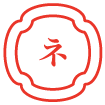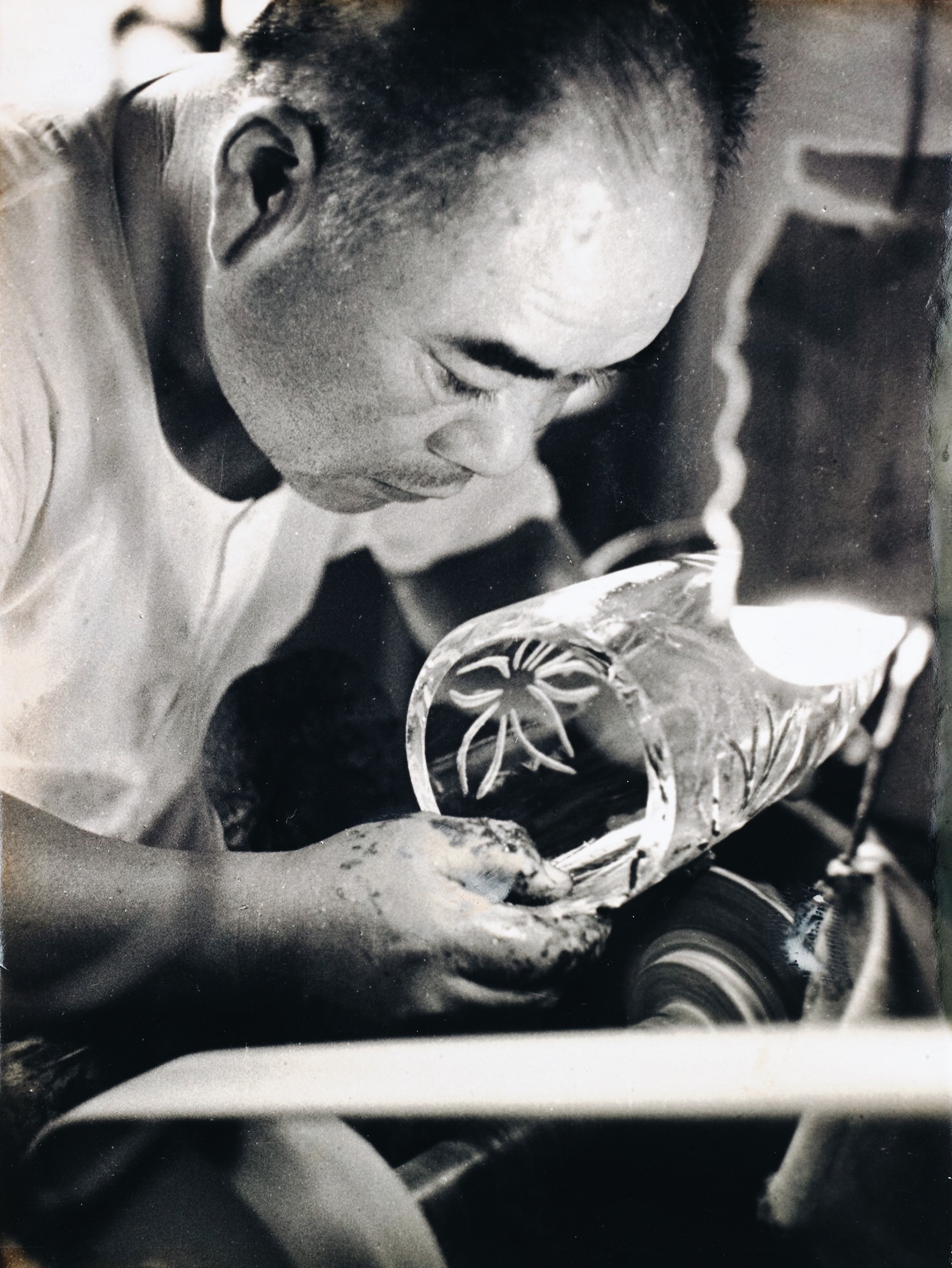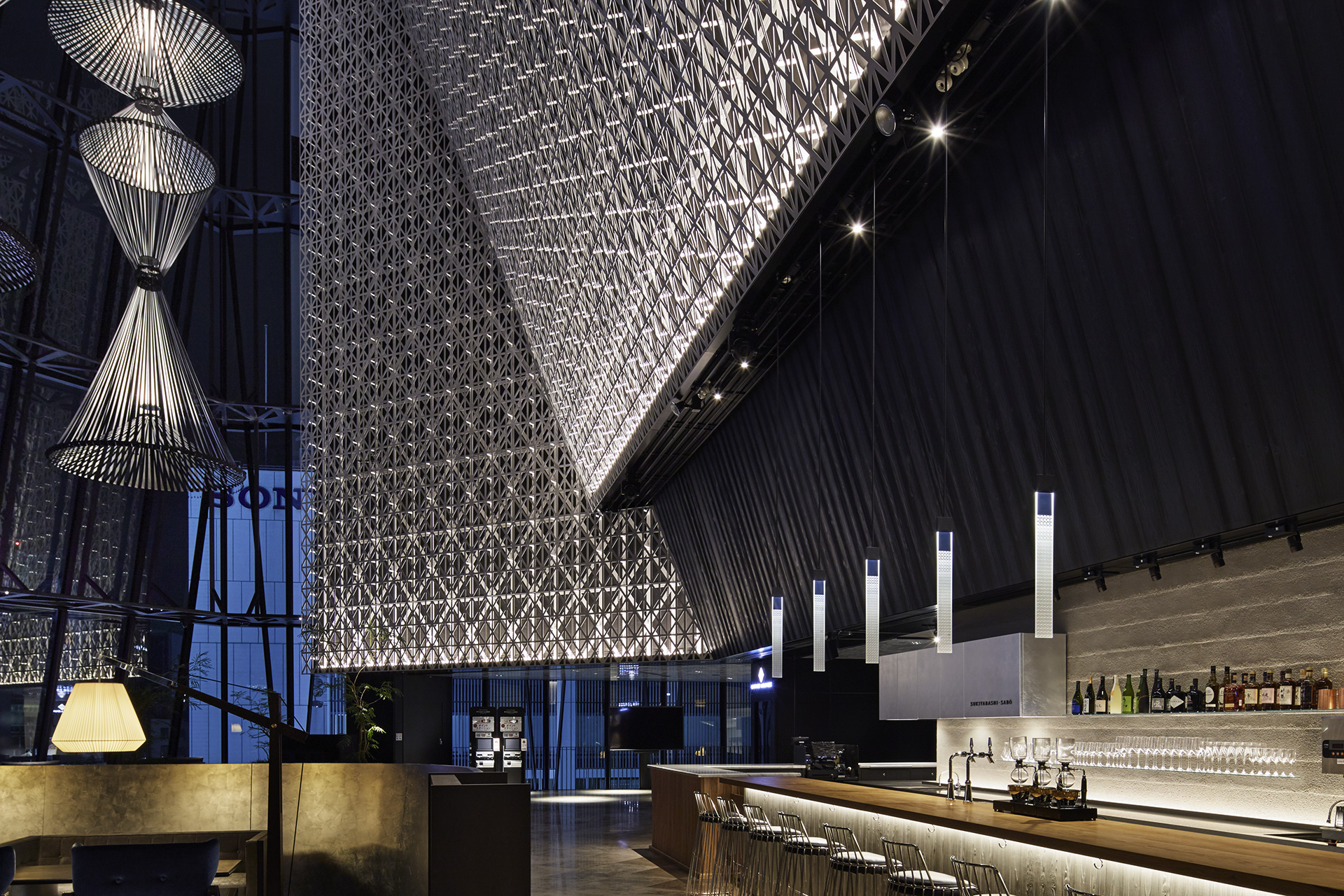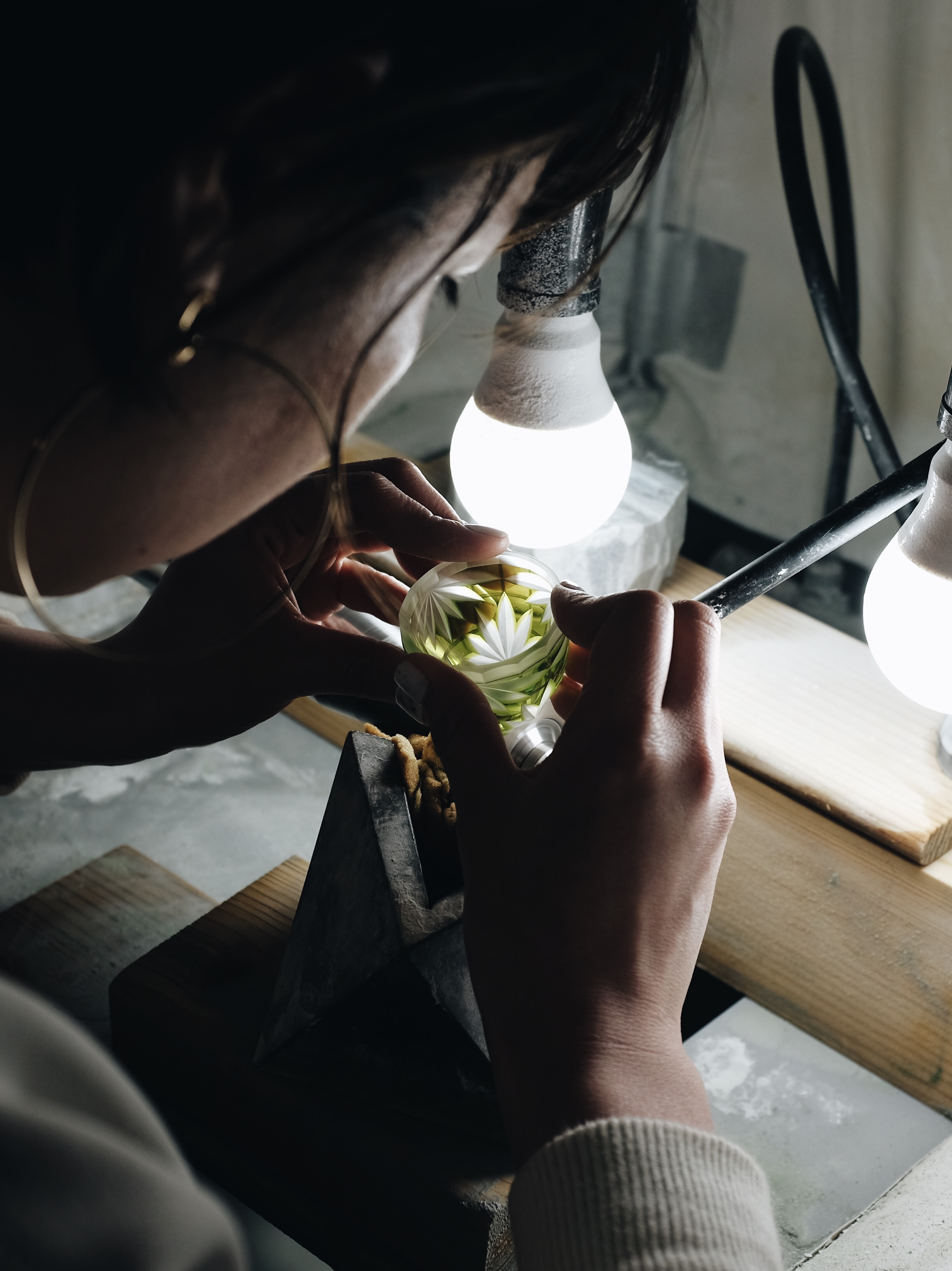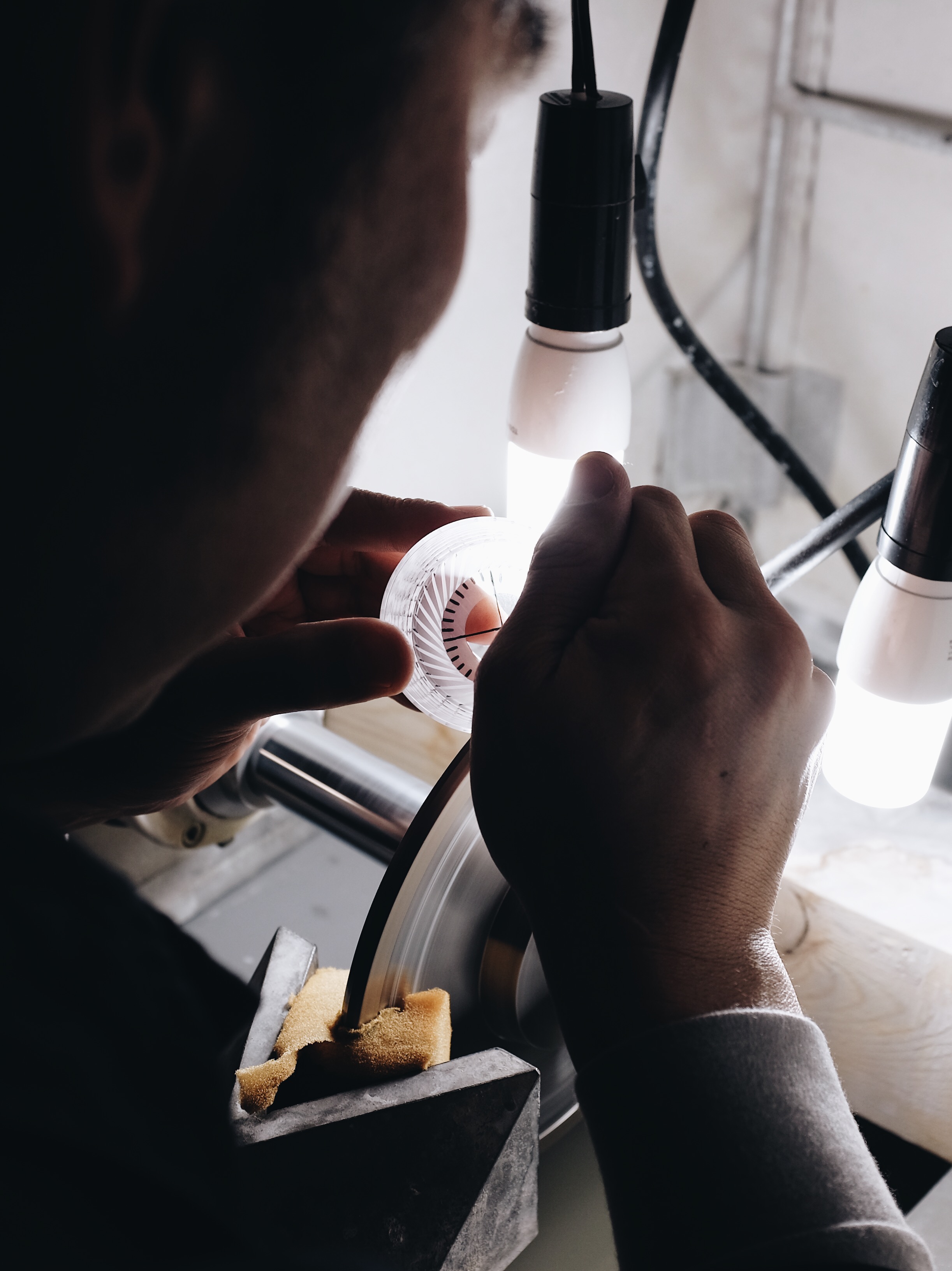Horiguchi Kiriko - Japanese Cut Glass | Craft
History of Edo Kiriko - Japanese Cut Glass
The history of Edo Kiriko began in the late Edo period (1603-1868 AD), when Kyubei Kagaya originated the use of garnet powder to cut and sculpt glass. Since then, it has developed into an intricate and sophisticated craft, gaining a prominent identity in Japanese culture.
Toru Horiguchi - Third Generation Craftsman
As the third generation master craftsman, Toru Horiguchi comes from a family of Edo Kiriko craftsmen that traces back to his grandfather, Ichio Horiguchi. In 1921, Ichio Horiguchi trained under the Edo Kiriko master Kobayashi and became the first glass craftsman to earn the title ‘Shuseki'. Shuseki (秀石) can be directly translated as ’Top Position’ and is an honourable title given to a chief instructor or master craftsman of one practice. Toru Horiguchi trained under Tomio Suda (the second Shuseki) to continue in his grandfather's footsteps as the third Shuseki.
Toru's Grandfather - Ichio Horiguchi
Contemporary Edo Kiriko
Toru Horiguchi not only preserves the art of traditional glass carving from the Edo period but also creates pieces with a more contemporary aesthetic. He pushes the boundaries of craftsmanship while staying true to the traditional values in order to pass it down to the next generation of Edo Kiriko craftsmen. As a way of looking forward and developing his craft, he often collaborates with designers outside of his practice. Shifting the focus from colourful and loud designs to a more minimal approach suited for everyday life, Toru Horiguchi continues to explore new ways of expression while upholding traditional methods.
Besides traditional Edo Kiriko cups, Toru Horiguchi has expanded the horizon of his craft through various projects including large-scale light fixtures and professional tableware for high-end Japanese restaurants as well as art installations for exhibitions. He has dedicated his career not only to continue evolving the craft of traditional glassware but also to educate people about Edo Kiriko, often going on tours in Europe to speak about Japanese cut glass. Through his efforts, Edo Kiriko is not a stagnant tradition from the past but a craft, which is alive and continuously evolving.
“The three principles that reflect Toru Horiguchi’s craft philosophy is Observe, Add, and Omit. ”
The Philosophy
Elevating the traditional methods through a new way of thinking, he is not afraid to make changes encompassing his understanding of contemporary culture. However, these changes are revealed over long periods of time and the emphasis remains on the importance of history and tradition. Toru Horiguchi continues to challenge himself in making Edo Kiriko be at its absolute best, the moment it is used. This has been an incredibly complex and lengthy process, with Toru Horiguchi experiencing countless trial and error. The intensive process has given him an emotional bond to each of his pieces.
“I have been working on the idea of glassware that completes itself when married with its other element.”
Horiguchi Kiriko Workshop
Toru Horiguchi and Senna Misawa, another artisan maker training under Toru, can be found in his workshop located right outside the city centre of Tokyo. Having a small and compact team allows Toru Horiguchi to oversee the entire process, assuring absolute quality of the Edo Kiriko glass range. The workshop is not dissimilar to a doctor’s office in how polished and tranquil it is. Wearing a uniform that he has made himself while working, his commitment to his craft is evident. Abandoning the old workshop style was a bold step towards perfecting the craft of Edo Kiriko.
The delicate and translucent characteristics inherent to Edo Kiriko is elevated by the clear colours and intricate patterns, which are hand-cut into the crystal glass. The subtle reflection and shadow patterns can completely transform the experience in various environments. There are six essential steps in making a single Edo Kiriko glassware. The first step, Skozuri, is to grind the bottom of the cup. The next step, Waridashi, is to draw vertical and horizontal reference lines, which act as the guide for all the cuttings. Then the basic cutting, Arazuri, shapes the foundation of the design. After that step is Sanban-gake, the application of precise detailed cuttings to the glass that distinguishes Edo Kiriko from other glassware. Following the detailed cutting is Ishigake, which smooths the cut surfaces to make the piece more refined. Once the surface is smooth, the glass is polished to heighten the lucidity of the cut surfaces, this step is called Migaki. The final step, Bafugake or Buffing, revealing the original shine and transparency of the glass.
